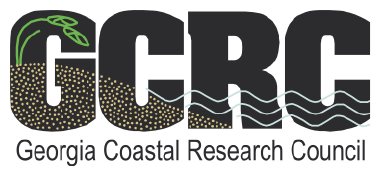Nature-based Solutions Funding Database
This tool, created by the National Wildlife Federation, is an interactive database to help community planners and stakeholders connect to federal funding resources for projects that include nature-based elements. Search through 70+ federal programs to specify project need and find contact information for each program. This database will be continually updated to include new, relevant information.
The Interactive Atlas, allows flexible spatial and temporal analyses of much of the observed and projected climate change information underpinning the WGI assessment. The Interactive Atlas has two components. The first (regional information) includes the ability to generate global maps and a number of regionally aggregated products (time series, scatter plots, tables, climate stripes, etc.) for observed and projected climate change for time periods, emissions scenarios or global warming levels of interest. It integrates a range of different datasets, including global and regional observations and the three most recent coordinated global and regional climate projection experiments: CMIP5, CORDEX and CMIP6, for different key variables, extreme indices and climatic impact-drivers (CIDs). The second component (regional synthesis) provides qualitative information about changes in climatic impact-drivers (CIDs) in several categories such as heat and cold, wet and dry, or coastal and oceanic. Users can select one or several impact-drivers and visualize the regional historical trends and projected changes over the sub-continental reference regions.
The Southeast Conservation Blueprint; South Atlantic LLC
The Southeast Conservation Blueprint is the primary product of Southeast Conservation Adaptation Strategy. The Blueprint is more than just a map. It’s a living spatial plan to achieve the SECAS vision of a connected network of lands and waters across the Southeast and Caribbean. More than 300 people from over 130 organizations have used or are using the Blueprint in their work. So far, the Southeast Blueprint has helped bring in more than $80 million in conservation funding to protect and restore over 100,000 acres.
The Blueprint identifies priority areas based on a suite of natural and cultural resource indicators representing terrestrial, freshwater, and marine ecosystems. Across most of the region, a connectivity analysis identifies corridors that link coastal and inland areas and span climate gradients. Because the Blueprint is a living plan, it will evolve over time, driven by improvements to the underlying science, our growing understanding of on-the-ground conditions, and input from new partners. So far, more than 2,000 people from over 500 different organizations have actively participated in developing the Southeast Blueprint.
Southeast Blueprint 2022 was released in October 2022 at the annual meeting of the Southeastern Association of Fish and Wildlife Agencies. Rather than continuing to stitch together so many different subregional plans, the 2022 Blueprint took massive strides toward regional consistency by using the same methods and indicators across 15 states of the Southeast. To provide more complete coverage of the SECAS geography, it also incorporated two additional input plans: the latest update to the Florida Marine Blueprint for marine areas in Florida and the Caribbean Landscape Conservation Design for inland areas in Puerto Rico.
You can explore and download the data on the Blueprint page of the SECAS Atlas, a free online mapping platform. Here, you can also read more about the methods and underlying datasets used to create Version 2022.
South Atlantic Conservation Planning Atlas; South Atlantic LLC
The South Atlantic CPA is a free mapping portal designed to share regional spatial data. Users can overlay multiple layers, create and export maps, and download data. In addition to the Conservation Blueprint, users will find information about connectivity, protected lands, urban growth, and much more.
Three portals have been created for the LCC network:
Spatially explicit datasets, galleries, and maps are available in a hierarchical system:
Data can be searched, viewed, and used in analyses. Additionally, users can upload their own data to their account to be used in conjunction with these datasets.
The CPA provides a platform for LCCs to create galleries to showcase a cohesive collection of spatial information and supporting documentation. Several galleries are being showcased at each portal.
The CPA also allows its users to create groups of members from several organizations who may have the same conservation goals. Within a group, you can perform analyses, upload data, and share information for other group members to use.
